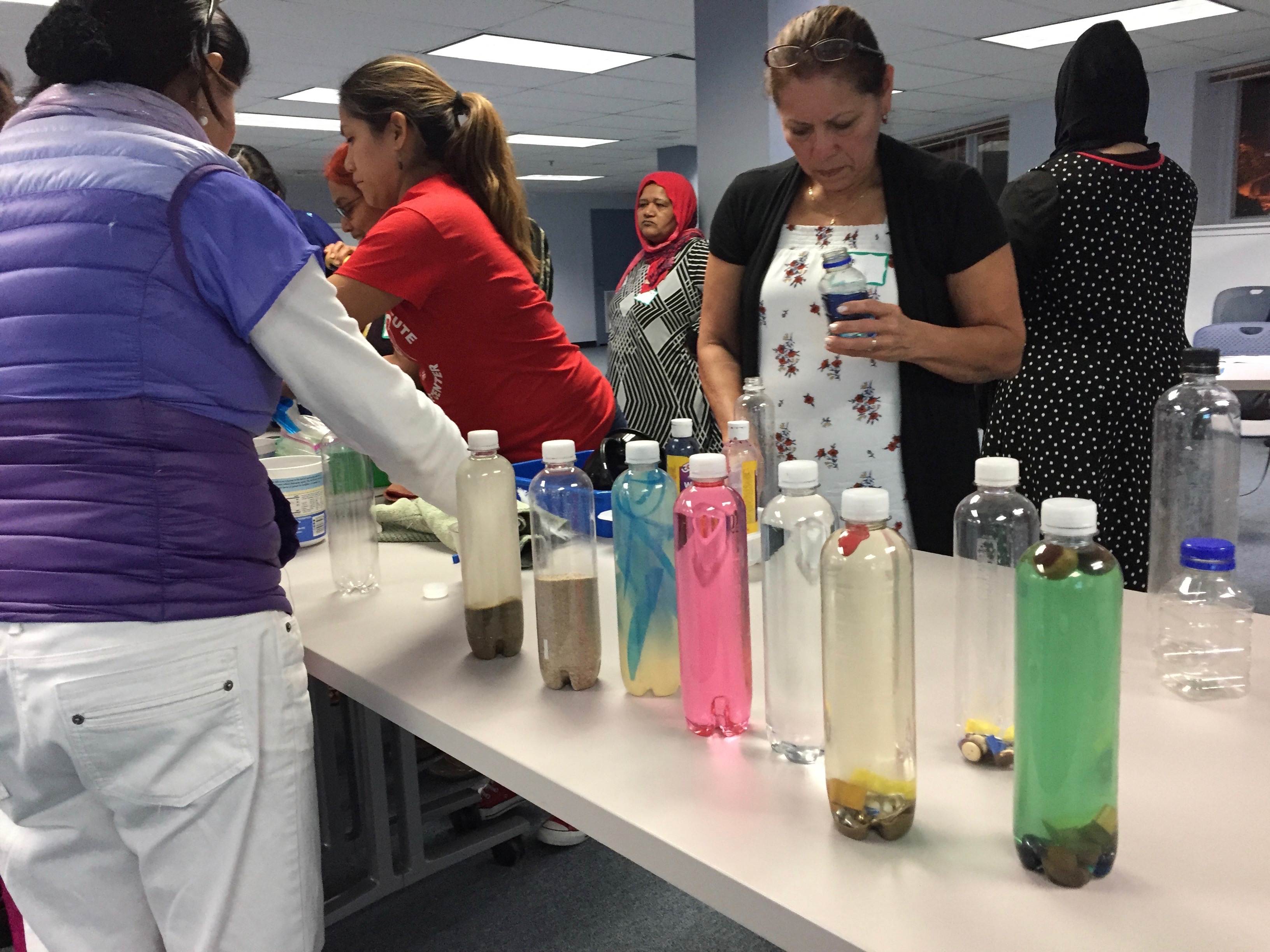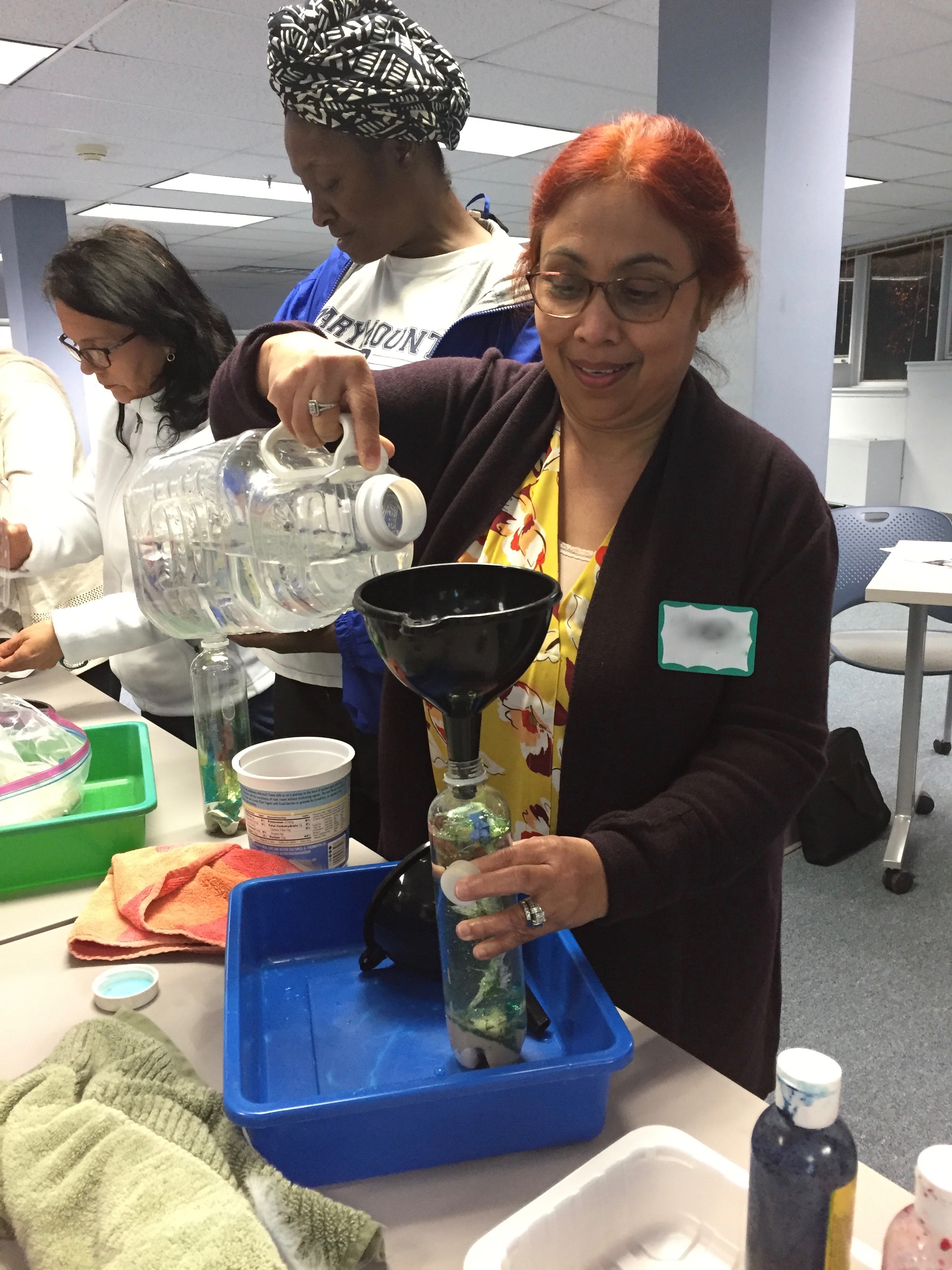Resources from previous NSTA conferences
By Peggy Ashbrook
Posted on 2017-11-30
 Have you revisited the sessions from previous NSTA conference to check out the resources posted by presenters? Begin with the 2017 Elementary Extravaganza that has 27 resources listed, both documents and webpages. It was held on Friday, March 31 at the Los Angeles Convention Center. My table had a parade of adults and children whipping up bubble foam from simple ingredients, and talking about the properties of matter. Other EE tables showcased:
Have you revisited the sessions from previous NSTA conference to check out the resources posted by presenters? Begin with the 2017 Elementary Extravaganza that has 27 resources listed, both documents and webpages. It was held on Friday, March 31 at the Los Angeles Convention Center. My table had a parade of adults and children whipping up bubble foam from simple ingredients, and talking about the properties of matter. Other EE tables showcased:
- an engineering challenge to design and build shade structures to protect special UV-sensitive beaded lizards from the sun (Laura Kitagawa),
- using a paper template and CD to make a spectroscope as used by the New Horizons spacecraft to explore Pluto (Nancy Tashima), and
- infusing children’s scientific knowledge and understandings into writing poetry (Patricia Bricker, Melisssa Faetz, Nancy Luke, & Kelly Tracy).
 Search for a topic, such as “notebook,” to locate sessions with specific topics. See Katie Morrison and Deb Chickadel’s resources from their “Using Lab Notebooks in the Preschool and Elementary Classroom” session for examples from preK-grade 5 and how-to guidance.
Search for a topic, such as “notebook,” to locate sessions with specific topics. See Katie Morrison and Deb Chickadel’s resources from their “Using Lab Notebooks in the Preschool and Elementary Classroom” session for examples from preK-grade 5 and how-to guidance.
 Even if you don’t teach high school you might look at materials from sessions such as “Blue Marble Matches” by Veronica Leija and Brandon Hargis to enhance your own understanding of science concepts.
Even if you don’t teach high school you might look at materials from sessions such as “Blue Marble Matches” by Veronica Leija and Brandon Hargis to enhance your own understanding of science concepts.
You can view sessions as far back as the 2015 Chicago National Conference by going to the NSTA conference page and clicking on “Sessions” for the recent or future conferences. As you search using a grade level or keyword to identify sessions of interest, keep an eye out for links to presenter materials listed at the bottom of the session information.
Not all sessions have links to materials–consider attending the next NSTA conference near you to learn directly from the presenters!
STEMcoding project releases "Physics of Video Games" Hour of Code activity
By Edwin P. Christmann
Posted on 2017-11-27
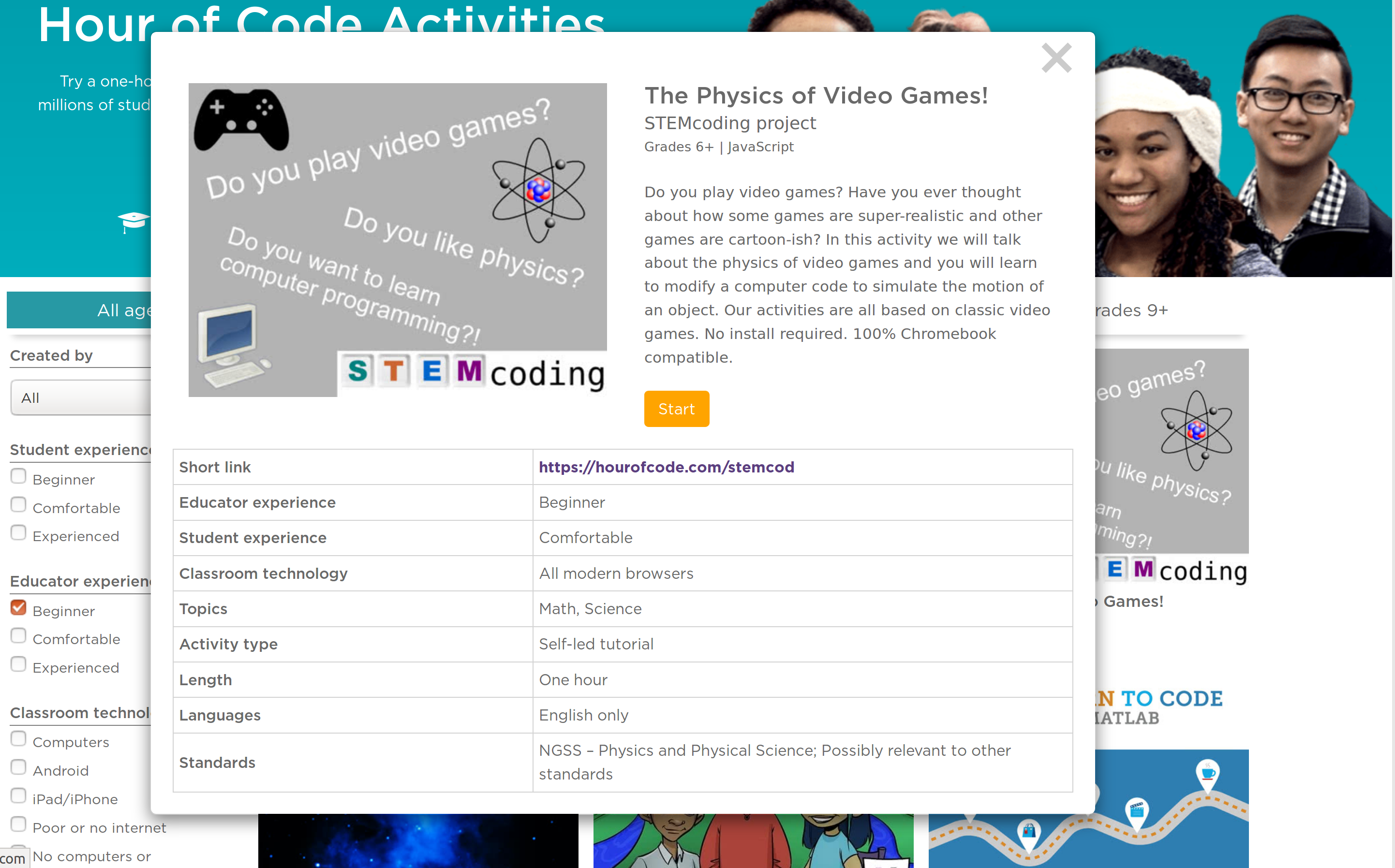
Until recently, the world’s most popular K12 computer science website, hourofcode.com, did not have any physics-focused coding activities. This was the case until Professor Chris Orban of Ohio State University initiated an effort to develop coding tutorials for physics teachers to learn code. Below is a link to describe his work on this project:
https://physics.osu.edu/news/prof.-chris-orban-receives-aip-meggers-project-award
Perhaps the best way to understand what Professor Orban has developed is to look at the “The Physics of Video Games” Hour of Code video tutorial below:.
Another perspective is to examine the STEMcoding project (u.osu.edu/stemcoding), which was just released on hourofcode.com/learn. The direct link to the video tutorial is at go.osu.edu/hourofcode . The “Physics of Video Games” coding activities are intended for absolute beginner programmers in grades 9-12 and they were designed with significant feedback from high school physics teachers. All activities are 100% chromebook compatible. The STEMcoding project, which was recently selected for the AIP Meggers award, is led by Prof. Chris Orban from Ohio State University and Prof. Richelle Teeling-Smith from the University of Mt. Union.
Once you take the time to explore this project, I think you will find it very useful for high school teachers. Since we all know that video games are of interest for most high school learners, having teachers examine how physics can be understood within video games offers educators great potential to motivate students to learn physics. In summary, this is a winner!
For more information including (mostly online) summer professional development for teachers (from any STEM discipline) please contact Prof. Chris Orban at orban@physics.osu.edu
Edwin P. Christmann is a professor and chairman of the secondary education department and graduate coordinator of the mathematics and science teaching program at Slippery Rock University in Slippery Rock, Pennsylvania.
- Read more about STEMcoding project releases "Physics of Video Games" Hour of Code activity

Until recently, the world’s most popular K12 computer science website, hourofcode.com, did not have any physics-focused coding activities. This was the case until Professor Chris Orban of Ohio State University initiated an effort to develop coding tutorials for physics teachers to learn code. Below is a link to describe his work on this project:
Build the Science Department: Stories of Success
By Carole Hayward
Posted on 2017-11-26
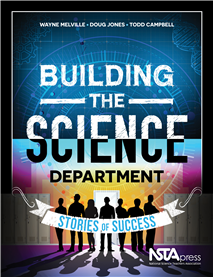 How can your science department become a site for developing teachers’ professional learning?
How can your science department become a site for developing teachers’ professional learning?
Building the Science Department: Stories of Success by Wayne Melville, Doug Jones, and Todd Campbell, features authentic accounts of teachers invested in reforming science teaching and learning. From the authors of the NSTA Press guide Reimagining the Science Department, this book offers stories told in teachers’ own words to provide advice and insight into strategies for building and improving a science department.
The book was conceived with the intention of sharing the stories of teachers who had negotiated reforms, challenged their own teaching practices, changed their classrooms, and transformed their departments.
The first part of the book focuses on scientific activity as represented in A Framework for K–12 Science Education and the Next Generation Science Standards (NGSS), and looks at how scientific activity can be used to “frame the work within science departments and how it aligns with contemporary visions of science teaching and learning.”
The second part of the book features teacher vignettes that address the various parts of a professional learning framework: context, content, activities, and processes. Each vignette is accompanied by commentary that unpacks key points and messages, and includes questions designed to challenge teachers to improve their instructional practices and align these practices more closely with current reform initiatives. As the authors note, one teacher alone cannot achieve the vision and aim of the Framework and NGSS; instead, teachers must work together as a department to collaborate, learn together, and move the department forward as a unit.
The book discusses some of the cultural issues that serve to maintain the status quo in science teaching. “The current reality is that school science has not changed much in the past century and is struggling to engage and retain students in many parts of the Western world,” the authors state.
Traditionally-taught school science, rather than engage young people, turns them away from the field; therefore, in order to reform science education, deeper and more authentic professional learning will be required. What’s being offered to teachers now isn’t good enough. “If we are being honest, the value of much professional learning that occurs in schools can be questioned. The reason for this pessimistic view is that much professional learning fails to address teachers’ learning needs, the context of their work, or the ways in which adults learn,” the authors state.
By exploring real-life examples from both new and veteran teachers, Building the Science Department can help science teachers identify gaps in their knowledge and experience, and start to build departments that will be able to meet the needs of diverse teachers interested in creating curricula and teaching practices that will engage their students and help them to achieve.
To learn more, read the sample chapter “The Content of Professional Learning.”
This book is also available as an e-book.
Follow NSTA
Quick Lab and Activity Assessments
By Gabe Kraljevic
Posted on 2017-11-20
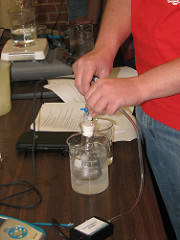
I would like to include a rubric when students are completing various labs and activities in science. Could you share any examples?
– A., Iowa
I have found that checklists, in particular, are good assessment tools during a lab. The objective is to quickly assess and record student performance while still monitoring the lab as you circulate the room and answer questions.
Most textbooks and lab manuals include generic checklists and rubrics for assessing lab skills and maintaining safety. Streamline the checklist by incorporating it with a class list. I would often copy checklists on colored paper and carry it around on a clipboard. You can align it with curricular goals by listing the specific learning outcomes. A ‘checklist’ doesn’t have to be tick-boxes – it could be a Likert-type scale or a quick numbering system (as simple as 1-2-3). Incorporate space for comments.
A quick search of NSTA’s The Learning Center came up with a few sample chapters that might be useful:
- The Nature of Science and Science Inquiry https://goo.gl/mnEf5T
- Assessment in Science: Practical Experiences and Education Research https://goo.gl/M6R9eb
4Teachers (https://goo.gl/3QHVUa) offers a pretty good checklist generator with some built-in items that you can select, edit, and augment. (After you select the appropriate grade level under the Science heading, check out the option for Experimental Research.) I would even give students the checklists to self-assess after cleanup.
This same website also has an excellent rubric maker: rubistar.4teachers.org. This website revolutionized the way I teach because I could generate an assessment rubric for almost any type of activity I could think of: reports, posters, brochures, public service announcements, videos, and more. I would never have considered doing debates in biology if it weren’t for this website. As for your specific needs: under the Science heading there is a Lab Report item that contains some lab safety assessment options. Group work rubrics can be generated as well.
Hope this helps!

I would like to include a rubric when students are completing various labs and activities in science. Could you share any examples?
– A., Iowa
I have found that checklists, in particular, are good assessment tools during a lab. The objective is to quickly assess and record student performance while still monitoring the lab as you circulate the room and answer questions.
Discovery bottles: Learning moments for children and adults
By Peggy Ashbrook
Posted on 2017-11-20
“Discovery bottles” are one way to allow children to use small objects without putting them in their mouths. These bottles for open-ended exploration can be constructed to relate to many different science concepts and topics. Other bottles are made expressly for helping children calm themselves as needed. See the Early Years blog post of September 17, 2009 or Sandy Watson’s 2008 article, “Discovery Bottles,” about using bottles filled with different materials as tools for science explorations. (Watson, Sandy. 2008. Discovery Bottles. Science and Children. 45(9): 20-24) Of course there is only “discovery” when children are first playing with the bottles and later when they talk about what they observe and think about it. None of the Discovery Bottles I’ve made have ever held children’s interest for more than a few months. Pass them on to another classroom or child care provider when your children have finished their discoveries.
Child care providers at a professional development session showed how important open exploration also is for adults. I was presenting about using Discovery Bottles to engage infants to eight year olds. I shared examples of using bottles filled with water and objects to play with and roll, and to observe water flow, air bubbles, magnification, color change (looking through colored water), floating and sinking objects, counting the number of objects, identifying shapes of objects, and for soothing oneself. Then each participant made their own to use for a purpose they chose and later described.
One provider and his spouse made a bottle half filled with water and just one cube made from thick art foam. He intended it to be a way to explore the level of a surface, to see how the cube floated when the bottle was laid sideways on different surfaces. Unexpectedly the cube stuck to the side of the bottle when he rotated the bottle, rather than staying afloat in the water. He wondered why the cube stuck there, wondering if static electricity was involved.
 We talked with the small group at the table, then rubbed the bottle on our hair and tested to see if another cube of art foam would stick to the outside of the bottle. It did not. We talked about how the inside was different from the outside of the bottle and they identified water as being present inside. So he wet the outside of the bottle with water and put a cube onto the wet outside. Since the cube stuck in the water on the outside of the bottle he said he thought it was something about the water that made the cube stick to the bottle. We talked about how water sticks to our hands when we wash them and that children also experience this. There is a word for that phenomenon, “adhesion.” Knowing a word doesn’t help us understand why a phenomenon happens, but it does give us a quick way to talk about it. The ‘why’ can come much later, after children have had many experiences observing the properties of different states of matter and building structures out of many smaller parts, when children encounter the fact that matter is composed of atoms and molecules in middle school.
We talked with the small group at the table, then rubbed the bottle on our hair and tested to see if another cube of art foam would stick to the outside of the bottle. It did not. We talked about how the inside was different from the outside of the bottle and they identified water as being present inside. So he wet the outside of the bottle with water and put a cube onto the wet outside. Since the cube stuck in the water on the outside of the bottle he said he thought it was something about the water that made the cube stick to the bottle. We talked about how water sticks to our hands when we wash them and that children also experience this. There is a word for that phenomenon, “adhesion.” Knowing a word doesn’t help us understand why a phenomenon happens, but it does give us a quick way to talk about it. The ‘why’ can come much later, after children have had many experiences observing the properties of different states of matter and building structures out of many smaller parts, when children encounter the fact that matter is composed of atoms and molecules in middle school.
“Discovery bottles” are one way to allow children to use small objects without putting them in their mouths. These bottles for open-ended exploration can be constructed to relate to many different science concepts and topics. Other bottles are made expressly for helping children calm themselves as needed.
A Learning Trajectory for Sensemaking in Science
By Cindy Workosky
Posted on 2017-11-20
The Next Generation Science Standards (NGSS) offer teachers the opportunity to consider teaching science in a new way. We help students engage with, wonder about, and make sense of natural phenomena, which closely resembles how scientists perceive the world and do their work. By observing phenomena, scientists generate questions, predict outcomes, and generalize results to develop shared knowledge. Using NGSS, and with the teacher’s help, students also work to build shared knowledge.
But the NGSS present another opportunity that is nested within shared knowledge-building: the opportunity to teach sensemaking. Because shared knowledge-building is a collaborative effort, it requires students to interact with one another and make sense of one another’s ideas. To productively engage with other students’ ideas for understanding phenomena, students must do three things: Make their own idea clear and comprehensible, understand their classmates’ ideas, and figure out how to compare their ideas.
These tasks are harder than they seem; even adults find them challenging! When a colleague processes a shared experience very differently than you do, consider how hard it can be to regard his or her viewpoint as equally credible as your own.
Our understanding of what others say is heavily influenced by both our expectations and prior knowledge. When students have ideas that are very different from what is expected and what is already known, teachers must provide support so the ideas can be comprehended and considered potentially valid and sensible. Collective sensemaking is particularly challenging for ideas contributed by English language learners (ELLs), or by students with social or cultural perspectives that diverge from the rest of the classroom community. Their ideas may be differently constructed or developed from resources unfamiliar to students accustomed to mainstream white middle-class norms promoted in the classroom. In these situations, teacher supports require more thoughtful and purposeful preparation.
I recommend three processes to help prepare for these sensemaking opportunities:
- Send home a science content or phenomenon interview for family
- Use Equitable Discourse Tools
- Prepare to Dig Into Discourse
Using these processes leads us along a new trajectory for developing increasingly sophisticated sensemaking skills: 1) Seeing others’ very different perspectives as valid, 2) learning how to make use of others’ ideas, and 3) developing sustained and rich discourse stamina.
Send home a science content or phenomenon interview for family (translated if necessary)
As the teacher in the ELL case study in Appendix D of the NGSS, I included the homework assignment to interview a family member about the driving question of the unit, “Is all soil the same?” As an English as a Second Language (ESL) teacher, I have found these family interviews useful in revealing the high-level thinking that students use but are unable to express in English. They also provide access to the intellectual resources for sensemaking that ELLs will draw from and offer to the rest of the classroom community.
Ever since Luis Moll and colleagues generated the Funds of Knowledge concept to describe the intellectual resources students bring to school from home and community, content-area ESL teachers have been developing ways to access those resources. If a scientific phenomenon is accessible and occurs in daily life, students can engage in high-level discourse with their families in their home language and then share those resources in science class.
The opportunity and benefits are not just for individual ELL student; they extend to all students in the classroom. When the teacher shares the interviews and ensures they are viewed as valid, the entire class gains access to increasingly diverse resources. In science, however, it can be challenging to ensure these resources from home and community are considered relevant by other students. My solution has been to write the experiences, ideas, and stories shared from home on sentence strips and present them as “evidence.” As a group, we can condense the stories into sentences, and highlight them alongside other evidence we’ve collected in class.
Returning to the example from Appendix D of NGSS, students shared information gathered from their family interviews about soils in different countries. Combined with other sources of evidence, this rich collection from diverse students helped our classroom community understand that soil varies across countries, has different colors and textures, and is made of different materials, and these factors influence what types of plants will grow.
Use Equitable Discourse Tools
As a content-area ESL teacher, I used the talk moves (traditional discourse moves) from TERC’s Talk Science Primer. But I found myself checking off different Talk Moves without using all the ideas to the fullest extent. This unintentionally introduced bias and led students to believe that some ideas were more useful for the community than others. Unfortunately, it was often the same students whose ideas were implied to be “less useful.” For example, if a student was presenting an idea that was unclear or didn’t make sense to me, I tended to emphasize it less because my perspective of success in discourse was based on whether I had satisfactorily delivered the prompt (e.g., Can someone build on that idea?), rather than on the idea’s usefulness to the community. There wasn’t an expectation that all ideas would be useful, but rather that all ideas would elicit a response.
What discourse moves—or what I propose we call Equitable Discourse—do is highlight the potential usefulness of every student idea. The concept of usefulness is an affordance. Each discourse move, in this framework, is a description of the work needed to capitalize on the affordance of a student’s idea. Talk can help clarify, strengthen reasoning, or apply “old” ideas to the new one. Every idea offers affordances for improving the sensemaking underway. By carefully considering how to use every idea, we advance sensemaking, and we begin to grasp how others perceive those science concepts, and how to shape and communicate those perspectives for a deeper and broader understanding of the phenomenon by everyone in the classroom.
Returning to the NGSS Appendix D example, an ELL student shared with the class the idea that black soil might mean that the soil has more water in it. His idea was not clearly understood, and it did not seem to particularly interest the rest of the class. The teachers, of course, thought that it deserved a response, and said, “Ah, yes, very interesting! Who agrees with Mohammad?” But initially, we did not substantially mine the idea.
The student persisted. He was trying to share that wetness could be an important identifiable characteristic of soil. If we had used the barometer of “idea successfully used by the class” as the measure of well-executed discourse, he would not have had to struggle to express himself. I consider this an excellent example of how equitable discourse moves can support class sensemaking, and enrich the knowledge building overall.
One of the equitable discourse moves is to “help student clarify their idea.” Mohammad’s idea—that soil can be wet and that wetness should be noted—didn’t make sense to most of the students because they were used to thinking of “wet vs. dry” as being a temporary characteristic, rather than a characteristic that varies across different types of soil. The discourse move helps us consider “whether or not the idea has been sufficiently clarified for use.” In this process, teachers model for the students the wherewithal and perseverance necessary for clarification, and at the same time, make explicit the skill of self-reflection for “how do I know that the idea is now clear?”
Examining and clarifying the student’s idea, especially because the idea didn’t make sense at first, turned out to be a valuable experience. At the end of the hour, the students remarked that soil as a characteristic of a habitat can be described in terms of wetness, and that this impacts what organisms the soil can support.
Prepare to Dig Into Discourse
Funds of Knowledge resources and the discourse moves are intended to support the teacher in creating an equitable space for conversation or “discourse.” This moves us away from the IRE model, in which —the teacher asks a question, the student answers, and the teacher evaluates——an approach perhaps best termed “guess what the teacher thinks.” We are aiming instead for a rich conversation in which teachers model the scientific practice of sensemaking: Ideas are being offered, considered valuable, evaluated, and then built on or discarded.
I have found that rich discourse happens when we allow sufficient time for thinking and reasoning to occur by and among many students. Most importantly, student ideas should represent a variety of ways to approach the phenomenon, incorporating the diverse intellectual resources that students bring from home and community, as well as classroom-based experiences. By digging deep into a conversation around questions with more than one right answer, students’ ideas can carry the conversation.
 We are told that our aim with the NGSS is to mirror in the classroom many of the processes and practices that scientists use. But we can enhance some of those real-world practices by employing the processes I’ve described, and by viewing the classroom community and individual students as moving along a sensemaking trajectory in a way that is purposefully supported. Because the scientific community is extremely stratified and not very diverse, and current science may not be representative of broader and more diverse communities, we could be overlooking key questions and missing out on ideas that would foster deeper understanding and innovative solutions for the challenges science undertakes. By enabling our students—our future scientists and decision-makers—to acknowledge, evaluate, and incorporate diverse perspectives, we have an opportunity to build a world that expands and enriches who does science, how science is conducted, and how it is used in the real world.
We are told that our aim with the NGSS is to mirror in the classroom many of the processes and practices that scientists use. But we can enhance some of those real-world practices by employing the processes I’ve described, and by viewing the classroom community and individual students as moving along a sensemaking trajectory in a way that is purposefully supported. Because the scientific community is extremely stratified and not very diverse, and current science may not be representative of broader and more diverse communities, we could be overlooking key questions and missing out on ideas that would foster deeper understanding and innovative solutions for the challenges science undertakes. By enabling our students—our future scientists and decision-makers—to acknowledge, evaluate, and incorporate diverse perspectives, we have an opportunity to build a world that expands and enriches who does science, how science is conducted, and how it is used in the real world.
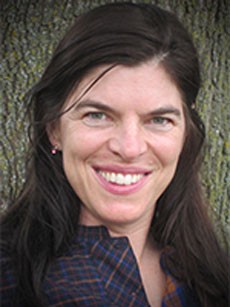
Emily Miller
Emily Miller is an elementary teacher and was a lead writer for the NGSS Diversity and Equity Writing team. She has taught science as an ESL/Bilingual Resource science specialist at a Title I urban school for 16 years. Miller has used the NGSS in her own diverse classroom and continues to improve and refine teaching to the standards with her students. She is consulting with the Wisconsin Center for Educational Research to develop teacher tools to promote sensemaking and language learning for ELLs in science. E-mail her at emilycatherine329@gmail.com.
Additional Links
Discourse Moves
MacDonald, R., E. Miller, and S. Lord. 2017. Doing and Talking Science: Engaging ELs in the Discourse of the Science and Engineering Practices. In Science Teacher Preparation in Content-Based Second Language Acquisition. p. 179-197. Springer International Publishing.
https://link.springer.com/chapter/10.1007%2F978-3-319-43516-9_10
https://www.wida.us/get.aspx?id=2095
http://stem4els.wceruw.org/resources/Student-and-Teacher-moves.pdf
Funds of Knowledge
Moll, L. C., C. Amanti, D. Neff, and N. Gonzalez. 1992. Funds of knowledge for teaching: Using a qualitative approach to connect homes and classrooms. Theory into practice. 31(2), 132-141.
https://edsource.org/wp-content/uploads/old/Luis_Moll_Hidden_Family_Resources.pdf
Appendix D
https://www.nextgenscience.org/appendix-d-case-studies
Lee, O., E. C. Miller, and R. Januszyk. 2014. Next generation science standards: All standards, all students. Journal of Science Teacher Education. 25(2), 223-233.
ELL Case Study ELL
https://www.nextgenscience.org/sites/default/files/%284%29%20Case%20Study%20ELL%206-14-13.pdf
Different perspective STEM TEACHING TOOL
TERC MOVES
https://inquiryproject.terc.edu/shared/pd/TalkScience_Primer.pdf
This article was featured in the November issue of Next Gen Navigator, a monthly e-newsletter from NSTA delivering information, insights, resources, and professional learning opportunities for science educators by science educators on the Next Generation Science Standards and three-dimensional instruction. Click here to access other articles from the November issue on assessing three-dimensional learning. Click here to sign up to receive the Navigator every month.
Visit NSTA’s NGSS@NSTA Hub for hundreds of vetted classroom resources, professional learning opportunities, publications, ebooks and more; connect with your teacher colleagues on the NGSS listservs (members can sign up here); and join us for discussions around NGSS at an upcoming conference.
The mission of NSTA is to promote excellence and innovation in science teaching and learning for all.
Future NSTA Conferences
2017 Fall Conferences
National Conference
The Next Generation Science Standards (NGSS) offer teachers the opportunity to consider teaching science in a new way. We help students engage with, wonder about, and make sense of natural phenomena, which closely resembles how scientists perceive the world and do their work. By observing phenomena, scientists generate questions, predict outcomes, and generalize results to develop shared knowledge. Using NGSS, and with the teacher’s help, students also work to build shared knowledge.
Asking Questions and Defining Problems by Making Cultural Connections
By Susan Cohen
Posted on 2017-11-20
My goal for students in my eighth-grade middle school science class is to enter high school with the absolute certain knowledge that they can “do” science. They know that when presented with the inevitable problems and questions of everyday life, they have strategies to analyze, interpret, and sort evidence to make good decisions. My role is to provide a framework for students to develop those strategies. The NGSS practice of asking questions and defining problems is the first of the techniques I use in my classroom.
Middle school students question everything. What middle school teacher has not heard, “When am I ever going to use this?” For science teachers, the solution is culturally relevant pedagogy connecting science curriculum, the Disciplinary Core Idea, to students’ cultural experience: i.e., the NGSS practice of asking questions and defining problems. I offer some examples of cultural connections my students have made.
Eighth graders at my school participated in a unit on the carbon cycle and renewable energy that included discussions about corn as a biofuel. Students discovered that corn was highly subsidized by the federal government, which led to rich discussions about the ethics of using food for transportation or energy and how that might impact food prices. This was a particular concern for the 63% of my students whose families lived in poverty. Students conducted a thorough investigation of their home pantries to discover how many foods contained corn or included corn syrup among the ingredients.
Students of different ethnic backgrounds found different foods in their cupboards, containing varying amounts of corn and corn products. The parents of three students refused to buy high-fructose corn syrup, so these students found very few examples to share with the class. Most students, however, had a heavy corn-based diet, and they questioned the availability of corn for eating if it was being used as fuel.
The revelation that so many families in our school community depended on corn as a staple of their diet motivated the students to conduct further research on biofuel production. This research dovetailed nicely into our study of the carbon cycle. It offered a cultural connection to students’ lives and led to student engagement.
In one of the unit’s formative assessments, students were asked to create a presentation about what they found most engaging about the unit. Students responded by creating cheerleading chants complete with tumbling; panel discussions; rap songs; posters; PowerPoint/Google Doc presentations; and two research papers. The point of this assessment is to give students an opportunity to demonstrate their mastery of the science in a creative, engaging, and entertaining way that connects what they learned to their own cultural experience.
Making cultural connections is sometimes as easy as asking students to do it themselves, as I did for the final task in the carbon cycle unit. After sharing all of their research and information and discussing it as a class, students wrote deeply thoughtful statements showing their personal connection to the carbon cycle and its impact on their lives. Many students commented on how vital the new information was to their future. One young man said he wanted to learn all he could about the mistakes adults had made so he could correct things as an adult. Another understood he and his family depended on current technologies, and he worried about the damage these technologies were doing to the environment.
Students also wrote about the discussions they had with their families. My classroom has a range of abilities and multiple languages, so student responses were written in four different languages, and two students used pictures to convey their thoughts. All students demonstrated an understanding of how the unit connected to their lives.
Connecting the Disciplinary Core Idea to one’s own life leads naturally to making connections across disciplines, what NGSS calls Crosscutting Concepts. In the past, these connections were often made by more advanced students, but the NGSS makes the connections explicit for and accessible to all students. In the carbon cycle unit, students quickly saw not only the connections to biology (food pyramid) and Earth science (formation of sedimentary rock and fossil fuels), but also to food production and the industrial revolution lessons from their social studies class, and the graphs, patterns, and data analysis from their math class.
It became almost a game with students to see who could make the most connections of the carbon cycle to the world outside the science classroom. They joyfully connected the carbon cycle to television shows, news events, and even to a rap song. Once students understood the connections across disciplines, they were able to create a framework for a more coherent scientific view of their world.
The middle school classroom is where students develop the strategies needed to become critical thinkers. The NGSS practice of asking questions, defining problems, and connecting them to students’ cultures and everyday lives makes inquiry a compelling and engaging activity for students, and answers the age-old question, “When am I ever going to use this?”
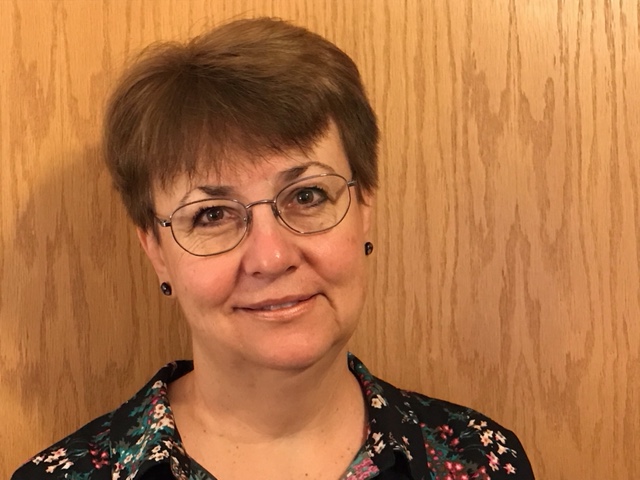
Susan Cohen
Susan Cohen is a National Certified Master Teacher in the area of early adolescence science and was the teacher highlighted in the race and ethnicity case study in Appendix D of the NGSS. She has taught middle school science for 20 years in a highly diverse urban school.
This article was featured in the November issue of Next Gen Navigator, a monthly e-newsletter from NSTA delivering information, insights, resources, and professional learning opportunities for science educators by science educators on the Next Generation Science Standards and three-dimensional instruction. Click here to access other articles from the November issue on assessing three-dimensional learning. Click here to sign up to receive the Navigator every month.
Visit NSTA’s NGSS@NSTA Hub for hundreds of vetted classroom resources, professional learning opportunities, publications, ebooks and more; connect with your teacher colleagues on the NGSS listservs (members can sign up here); and join us for discussions around NGSS at an upcoming conference.
The mission of NSTA is to promote excellence and innovation in science teaching and learning for all.
Future NSTA Conferences
2017 Fall Conferences
National Conference
My goal for students in my eighth-grade middle school science class is to enter high school with the absolute certain knowledge that they can “do” science. They know that when presented with the inevitable problems and questions of everyday life, they have strategies to analyze, interpret, and sort evidence to make good decisions. My role is to provide a framework for students to develop those strategies. The NGSS practice of asking questions and defining problems is the first of the techniques I use in my classroom.
Science for All Students: A Teacher’s Perspective
By Rita Januszyk
Posted on 2017-11-20
Like many classrooms around the country, my diverse fourth-grade classroom consisted of regular education students, special education students, English learners, gifted students, students receiving free and reduced-cost lunches, and students from different racial and ethnic backgrounds. The science and engineering practice of developing and using models affords all students access to science learning.
As one of the writers of the Next Generation Science Standards (NGSS) and member of the NGSS Diversity and Equity Team, I became familiar with the research on effective teaching strategies described in NGSS Appendix D. I learned that the effective teaching strategies leverage support of science learning for specific demographic groups. But how could I incorporate all the strategies in my unit and lesson plans for my diverse classroom? Since some strategies overlapped across demographic groups and some students overlapped across demographic groups, I focused on those overlapping strategies (noted in italics in the lesson description below):
- Promote place-based learning in a community context;
- Use authentic, relevant activities;
- Use language to do science, as NGSS practices are language intensive;
- Provide multiple modes of representation, including both linguistic (i.e., oral and written language) and non-linguistic modes (e.g., drawings, graphs, tables, symbols, equations); and
- Leverage students’ funds of knowledge from their cultural and linguistic backgrounds.
I incorporated effective strategies to promote my students’ engagement and support their learning as I wrote the lesson sequence to meet the fourth-grade NGSS performance expectation:
4-PS4-2. Develop a model to describe that light reflecting from objects and entering the eye allows objects to be seen.
The Framework for K–12 Science Education states that developing and using models is central to the work of a scientist or engineer. Scientists develop models to communicate their ideas and use models to explain and predict phenomena. In traditional science instruction, students are presented with a finished model without understanding what it means to arrive at that model scientifically. When using instruction based on the NGSS, as students develop a model, they can make their thinking visible. My fourth-grade students visualized the phenomenon and made sense of the idea that light reflects off the object, enters the eye, and thereby causes the object to be seen.
The lesson sequence began with a question: How do we see an object? Working with their group, students received a lidded box that had an eyehole and a flap. For the investigation, students (1) looked inside the box and recorded observations; (2) opened the flap, looked inside the box, and recorded observations; and (3) shined a flashlight into the opened flap, looked inside the box, and recorded observations. With each observation, students were prompted to answer the question how does your observation help you understand how you can see the object? (The group discussion with each observation is language intensive.)

Students Make Observations With Light Box
Each group discussed their ideas, then developed an initial model that represented their consensus on their ideas. (Using multiple modes of representation, an English learner develops a model to communicate science ideas.)

Initial Model
Students did not reach consensus and had several questions about how they could see an object. I handed out mirrors and black paper. Students investigated and made more observations. As I circulated among groups, I prompted their thinking about the path of the light in the investigation. (The investigation provides ample opportunities for language use while doing science.)
A key part of modeling is that students, like scientists, revise their models to fit with new evidence. The continued investigation and the description of the path of the light was an outgrowth of authentic questions that my students generated. They revised their models to include their new understanding.

Revised Model
What was the change from the initial model to the revised model? In the initial model, the arrow direction was from the eye to light box. In the revised model, arrow direction showed the light entering the eye. The initial model conveyed a common student perception that seeing something comes from the eye, like an eyebeam.
In the NGSS classroom, as students continue to investigate, they make additions and changes to their model. They are able to link new knowledge with prior knowledge. A teacher might ask these questions: What are your group’s ideas? Do you agree with those ideas? What do we investigate next?
The science and engineering practice of developing and using models is important. First, this practice is an important, authentic scientific enterprise. Second, this practice provides affordances for diverse students toward understanding new ideas and expressing those ideas using multiple modes of representation. My experience affirmed that all of my students were highly engaged when developing and revising their models to make sense of the phenomenon that was compelling to them.
Note: The lightbox investigation task is based on a similar task in Investigating and Questioning our World through Science and Technology (IQWST) curriculum units.
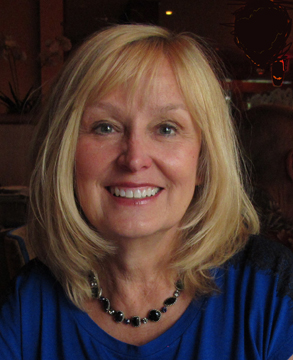
Rita Januszyk
Rita Januszyk (ritajanuszyk@gmail.com) is a retired elementary teacher from Hinsdale, Illinois. She was a K–5 classroom teacher and gifted push-in teacher and coordinator. Januszyk worked on many teams during the development of the Next Generation Science Standards, including the writing team, NGSS Diversity and Equity team, NGSS Evidence Statements team, and NGSS Classroom Sample Tasks team. She also served on the Illinois State Board of Education Model Science Resource Project. Januszyk is one of the editors and contributors of the book NGSS for All Students, published by NSTA (2016). Currently, she is working with New York University and Stanford University as a science writer for grade 5 NGSS-aligned units, and is providing professional development workshops and presentations to help implement the NGSS.
This article was featured in the November issue of Next Gen Navigator, a monthly e-newsletter from NSTA delivering information, insights, resources, and professional learning opportunities for science educators by science educators on the Next Generation Science Standards and three-dimensional instruction. Click here to access other articles from the November issue on assessing three-dimensional learning. Click here to sign up to receive the Navigator every month.
Visit NSTA’s NGSS@NSTA Hub for hundreds of vetted classroom resources, professional learning opportunities, publications, ebooks and more; connect with your teacher colleagues on the NGSS listservs (members can sign up here); and join us for discussions around NGSS at an upcoming conference.
The mission of NSTA is to promote excellence and innovation in science teaching and learning for all.
Future NSTA Conferences
2017 Fall Conferences
National Conference
Like many classrooms around the country, my diverse fourth-grade classroom consisted of regular education students, special education students, English learners, gifted students, students receiving free and reduced-cost lunches, and students from different racial and ethnic backgrounds. The science and engineering practice of developing and using models affords all students access to science learning.



